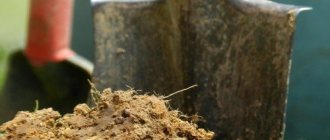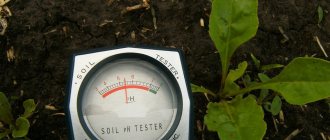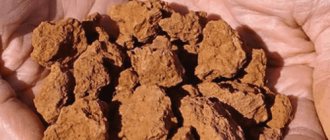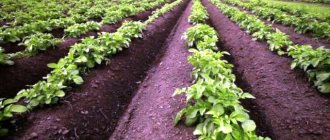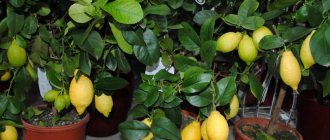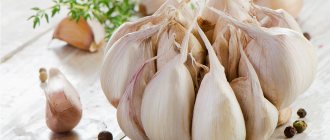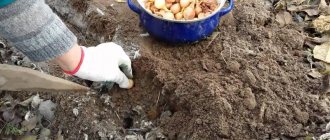Sooner or later, many gardeners are faced with the problem of decreasing yields at their summer cottage. It seems that they grow the same crops and provide them with proper, complete care, but the harvest is less and less. It's all about the soil, it's just that over time it becomes depleted and loses its beneficial properties.
In this article we will tell you how to return the soil to its beneficial properties and increase fertility without the intervention of chemicals using absolutely safe but very effective methods.
Well-organized crop rotation
It is very important to alternate the place where plants are sowed annually and to properly organize crop rotation. If you constantly plant crops in the same places, this will lead to depletion of the soil and a decrease in its physical and chemical characteristics.
For example, if you plant cabbage in the same place year after year, this will cause an increase in soil acidity. Persistent onions can lead to an increase in nematode populations. The apple tree emits ethylene, a gas that retards the growth of seeds of other crops, etc.
Therefore, annual and biennial crops should be planted in their original place no earlier than after 5 years. The table below provides information on the proper rotation of different crops.
| Planted crop | Previous culture |
| tomatoes | cucumbers, carrots, onions, legumes |
| cucumbers | green manure, onions, cabbage, tomatoes, celery |
| peppers | onions, legumes, carrots, cucumbers, celery |
| zucchini | onions, dill, parsley, radishes, carrots, green manure |
| eggplant | cabbage, peas, onions, green manure, garlic, beans |
| cabbage | celery, potatoes, zucchini, squash, pumpkin, peas, legumes, green manure, carrots |
| carrot | tomatoes, onions, zucchini, cucumbers, potatoes |
| beet | cucumbers, tomatoes, potatoes, beans |
| potato | beets, green manure, cabbage |
| peas | potatoes, cucumbers, tomatoes, turnips, cabbage |
| onion garlic | green manure, tomatoes |
| parsley | cucumbers, tomatoes |
Plot
61 votes
+
Vote for!
—
Vote against!
Soil is the foundation of your harvest. This means that you need to know everything about the soil in your garden plot and what the soil fertility depends on, and also do everything to improve these indicators. After all, the growth and development of plants growing on it and the adaptation of transplanted garden crops depend on the quality of the soil. The condition for a healthy and strong garden crop to grow is to saturate the soil with nutrients.
What kind of soil is there?
Quite often, amateur gardeners say that they put in a lot of work, but received little harvest, and the reason for this is poor soil. It follows from this that it is definitely worth knowing all the properties of the soil. The soil is considered fertile provided that the plant can take enough moisture and microelements from it. If the soil is poor, then there are few substances useful for plants, and their availability to them is rather weak due to the structure of the earth.
The composition of the soil is: sandy loam, clayey, sandy and loamy.
- Clay soil is infertile due to its poor structure, which has little air and takes a long time to warm up. Poor penetration of water deep into the soil contributes to the floating of clay soil and, when dry, the formation of a crust on its surface. The exception is clayey chernozems.
- Loamy soils are something between sandy loam and clayey soils. The soil (except for strongly podzolic soil) has an excellent structure, considerable reserves of necessary elements, increased fertility and is considered quite suitable for growing garden crops and fruit and berry bushes.
- Sandy and sandy loam soils are considered the poorest. They contain a high content of sand and a small amount of dust and silt. Such soil perfectly passes water, but in the lower part all useful microelements are washed out with water. The soil warms up quite quickly, but there is no particular benefit from this, since there is a lack of moisture.
- As a rule, podzolic soils with high humidity are acidic. A lot of sorrel and horsetail usually grow on such soil. Acidic soil is identified by a whitish layer that resembles ash and is not too deep. In this soil, useful minerals are found in the lower layers, there is almost no humus and few nutrients for growing crops.
- Solonetzes at shallow depths contain easily soluble salt (sodium chloride and sodium sulfate), which is the root cause of soil salinity. Silt particles absorb a small amount of sodium, because of this, salt licks at high humidity become sticky and structureless, and also take a long time to dry in the spring. When completely dry they become hard and therefore very difficult to process.
Determination of soil fertility
If you decide to plant a vegetable garden on your site, you need to make sure that your soil meets these goals. If it does not suit you, then this can be corrected by increasing its fertility. First we need to consider what kind of fertility there is.
There are several types of soil fertility:
- Natural fertility. This indicator characterizes the properties of the soil, or rather the landscape, in its natural state, which is determined by the productivity of natural phytocenoses.
- Artificial fertility. This fertility is possessed by the agricultural landscape, that is, the soil that has been changed as a result of human economic activity. In its pure form, this applies to reclaimed and greenhouse soils.
- Potential fertility. The ability of soils to produce a certain crop. However, these opportunities are not always realized, since everything depends on human economic activity and weather conditions. High potential fertility is inherent in chernozem soils, low – in podzolic soil. But everything is relative: in arid conditions, the productivity of chernozems is much lower than that of podzolic soil.
- Effective fertility. This is potential fertility, which is realized under certain conditions - climatic and agrotechnological. Effective fertility depends not only on the type of landscape, soil properties, economic activities, but also on the crops grown.
- Economic fertility. In this case, effective fertility is measured in economic terms, that is, the cost of the crop is taken into account.
To determine the composition of the soil, it is recommended to do the following: take a handful of soil from the plow and add a small amount of water, then stir thoroughly, bringing it into a dough-like state. Roll the resulting mixture into a rope and give it the shape of a donut. And let's analyze the result:
- If the donut does not crack when bent, then the soil is clayey.
- If cracking does occur during bending, then you have loam.
- In sandy loamy soil, the rope still rolls up, but it won’t make a “donut”.
- But you can’t even knead “dough” from sandy soil.
Now it’s worth finding out the soil fertility conditions by measuring the depth of the fertile soil layer, because often the soil is suitable exclusively for growing weeds:
- If the thickness of the fertile layer is less than 10 cm, then it will not even be possible to form a lawn. For a lawn, fertile soil should be more than 10 cm.
- To sow perennial grass crops, the thickness of the fertile soil should be within 15-17 cm.
- If you are going to plant trees, the soil thickness should be 25-30 cm due to the fact that the root system is formed at this depth.
- For bushes, fertile soil should be 15-20 cm thick.
- As experts say, on average the fertile layer should reach 18-20 cm.
Methods for fertilizing the soil on the site
So, you have understood the properties of the soil and decided on the type of soil on your summer cottage. Almost all owners are beginning to understand the need to improve the land. But still, how can this be done without harm? After all, every professional gardener knows that any poor soil will not tolerate large amounts of fertilizer; everything is good in moderation. Also remember that adding peat is not the most effective way to optimize the soil.
Clay soil
If your site has clay soil, then restoration of soil fertility is carried out in accordance with the following instructions:
- To increase the fertility of clay soil, it is necessary to start applying fertilizers in the autumn - 3 kg per 1 m2, add ash - 0.2-0.3 kg and add lime - 0.35-0.6 kg.
- Such soil is plowed to a depth of no less than 25 cm. On such soils, heat-loving crops and vegetables are grown on ridges and ridges.
- When working on heavy soil, it is necessary to remember that seeds are sown at a shallower depth, and seedlings are planted at an angle so that their roots are in warmer layers.
- Potato tubers, when planted on a flat surface, should be at a depth of no more than 6-8 cm. When filling the tubers, special peat should be added to the ground - composted.
- Hilling up of plants is carried out in two stages. The height of the ridge after the second stage should be 15-18 cm.
Sandy soil
To increase the fertility of sandy soil, you need to improve the structure and also optimize its moisture:
- Fertilizer is applied to the soil in several stages and at different depths for better reproduction of microorganisms beneficial to plants, which make it possible to increase the yield.
- We take the annual norm of fertilizers (lime - 0.4 kg, manure 4 kg per 1 m2) and divide it into two equal parts.
- We introduce one part into the soil in the fall to a depth of 25 cm, and the other in the spring to a depth of 15 cm.
- For the best effect, ash should be placed in rows and holes.
- One option for improving the fertility of sandy soil is to plant lupine.
- Mineral fertilizers must be applied to the soil along with organic fertilizers in the spring. A mixture of fertilizer and humus in a ratio of one to two is more effective.
- After fertilizing the sandy soil, early heat-loving plants grow well. It is necessary to grow crops on a flat surface.
- Seeds are sown in the soil much deeper, and potato tubers are planted to a depth of at least 12 cm.
- There is no need to carry out hilling. And when it rains, only one procedure is needed.
Sour earth
To enrich the composition of acidic soil, wood ash and lime, which contain calcium, are usually added, which is often absent in acidic soil. In sufficiently acidic soil, a kilogram of limestone is added per square meter to get rid of acidity. After this procedure, various types of fertilizers will be needed - mineral and organic.
Solontsy
If solonetzes predominate at your dacha, then to increase soil fertility, follow the tips below:
- Deeply plowed solonetz will not give a good result without adding special additives, such as phosphogypsum.
- This additive is applied to solonetzes per 1 sq.m in the amount of 500 grams. On solonetz soils, the dosage will be less and amount to 200 grams per 1 sq.m.
- Finely ground gypsum can also be used to improve solonetzes. It is very good when it is combined with manure, that is, gypsum is added first, and manure is added the next year.
- In not very large areas of solonetz soils, fertile soil is added, the thickness of which is 20 cm.
- To improve saline soil, it is necessary to add calcium sulfate. Its function is to absorb calcium and also remove salt from the lower layer. After this procedure, the soil becomes structural and absorbs water well.
Waterlogged horizons
There are situations when the soil on the site is too moist, in this case do this:
- When soil moisture is high, drainage of surface and groundwater is necessary.
- Using various methods, soil loss can be prevented in certain areas. Usually the beds are placed crosswise.
- Well-cultivated soil absorbs water much more if it is located on a slight slope.
- Lands suffering from erosion are planted with perennial plants that have a small root system.
- It is a good idea to practice terracing on the steepest slopes. The upper fertile layers are removed and sent to a new location. After this, the slopes of the terraces are laid out using turf.
Ways to improve soil fertility
If there is a decrease in soil fertility, this is manifested not only in a decrease in yield. Plants also become more susceptible to various diseases and pests. And they may even die. Therefore, we will find out what measures need to be taken.
- Organization of crop rotation. Correctly executed crop rotation plays one of the main roles in improving soil fertility. Its task is that annual and biennial crops must be planted in the same place after about 5 years. It follows from this that it is recommended to change the location of sowing crops every year.
- Sowing medicinal plants. There is such a method - treating the soil by sowing special plants. The following plants have such medicinal effects: nettle, marigold, garlic, wormwood, shepherd's purse, etc.
- Use of Californian worms. This is not a very common method, but it is becoming popular every year, because soil rich in worms gives a good harvest. California worms (a subspecies of common worms) will help restore the soil by performing their beneficial functions. This especially applies to long-lived red Californian worms. Their advantages are high fertility and increased digestibility of various organic matter.
- Thermal soil treatment. A radical way to increase soil fertility is heat treatment. In the process, weeds and all kinds of pests are destroyed. The main disadvantage of heat treatment is the inability of such treatment over large areas. Typically, the method is used in greenhouses, as well as in greenhouses.
- Application of organic fertilizers. There is no need to write off the method of our grandparents - organic fertilizers, in particular adding manure, compost and ash to the soil.
- Mixed planting of crops. It is recommended to plant a satellite plant next to the main plants. With this proximity, the general condition of the plants becomes significantly better, and there is also a decrease in the incidence of crops and an increase in the taste of the fruits. This method makes it possible to avoid soil depletion. For these purposes, various plants are used, such as rosemary, basil, chamomile, and marigolds. They are planted between beds, rows, along garden paths and borders. Among other things, they are attractive to bees. This promotes pollination of the main plants, therefore increasing the yield.
- Rest for the ground. To maintain soil fertility, give the soil a break, because it also gets tired. This can be achieved by not planting crops for one year. During this period of time, weed, mulch and apply fertilizer. In the autumn, dig up such an area so that the top layer is at the bottom of the soil.
- Sowing green manure. An excellent way to increase soil fertility is to sow green manure (plants that have a high content of protein, nitrogen, and starch). Green manures include oats, rye, sunflower, and mustard. Sowing is carried out at the end of August or in September, after the main harvest is harvested. Green manures are grown before flowering and then mowed, leaving them on the soil itself for the winter.
Thus, you have very serious work ahead of you. After all, without improving soil fertility, you cannot reap a good harvest!
Mixed planting rules:
- crops that belong to the same family cannot be planted nearby;
- the proximity of low-growing and tall plants should be avoided, otherwise the former will be deprived of sunlight;
- when planting neighboring plants, their needs should be taken into account (some love the sun, others shade, etc.);
- It is recommended to plant spicy and medicinal herbs as neighbors.
Correctly selected neighbors:
- improve the condition of plants;
- will reduce their incidence;
- will attract bees, thereby increasing pollination;
- will increase productivity;
- improve the taste and quality of fruits;
Associated plants include:
- dill;
- chamomile;
- mustard;
- rosemary;
- lavender;
- mint;
- basil;
- yarrow;
- coriander;
- oregano;
- nettle;
- dandelions;
- horseradish;
- tarragon;
- cumin, etc.
Soil leave
If for two seasons in a row under favorable weather conditions, with regular application of fertilizers and the absence of pests, you do not get a good harvest, then the soil on your site is depleted and needs rest.
What to do? During the year, do not sow the soil with any crops, but do not forget to fertilize, mulch and cultivate the soil. It is, of course, impossible to organize such a holiday throughout the entire area, but there is a solution:
- divide the area into several parts,
- in the first year, let one part rest, the next year - another, etc.
Thus, over the course of the season the soil will rest, recover and become healthier.
What are the disadvantages of organic fertilizers?
As recognized above, they tend to be a dilute source of nutrients compared to inorganic fertilizers, and where significant amounts of nutrients are required to produce a profitable crop, very large quantities of organic fertilizers must be applied.
This results in exorbitant transportation and application costs, especially when farming is practiced at a long distance from the source of organic fertilizers.
The composition of organic fertilizers tends to be very variable, making precise application of nutrients to suit plant production difficult.
Large-scale agriculture tends to rely on inorganic fertilizers, while organic fertilizers are cost-effective in small-scale or home gardens.
In practice, there is often a trade-off between the use of artificial and organic fertilizers, typically using inorganic fertilizers supplemented by the addition of available organic matter, such as crop residue return or manure application.
It is important to distinguish between what we mean by organic fertilizers and fertilizers approved for use in organic agriculture and organic horticulture by organizations and authorities that provide organic certification services.
Some approved fertilizers may be inorganic, naturally occurring chemical compounds, such as minerals.
If you want to revive soil fertility and receive an ever-increasing amount of cheap, environmentally friendly food and feed products, you need to master the technology of producing vermicompost - the most effective and cheapest fertilizer for fields, gardens and vegetable gardens.
The content of the article



